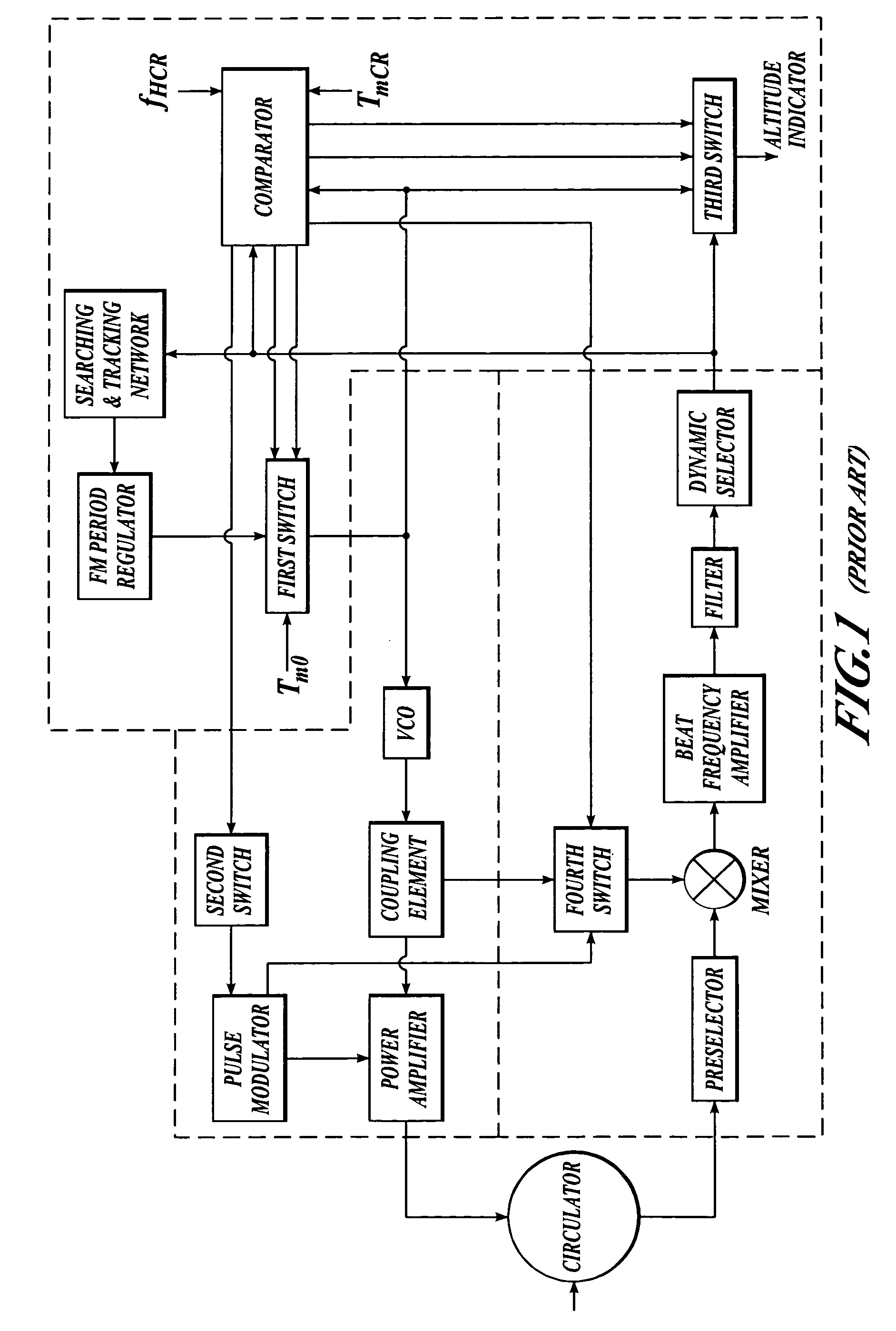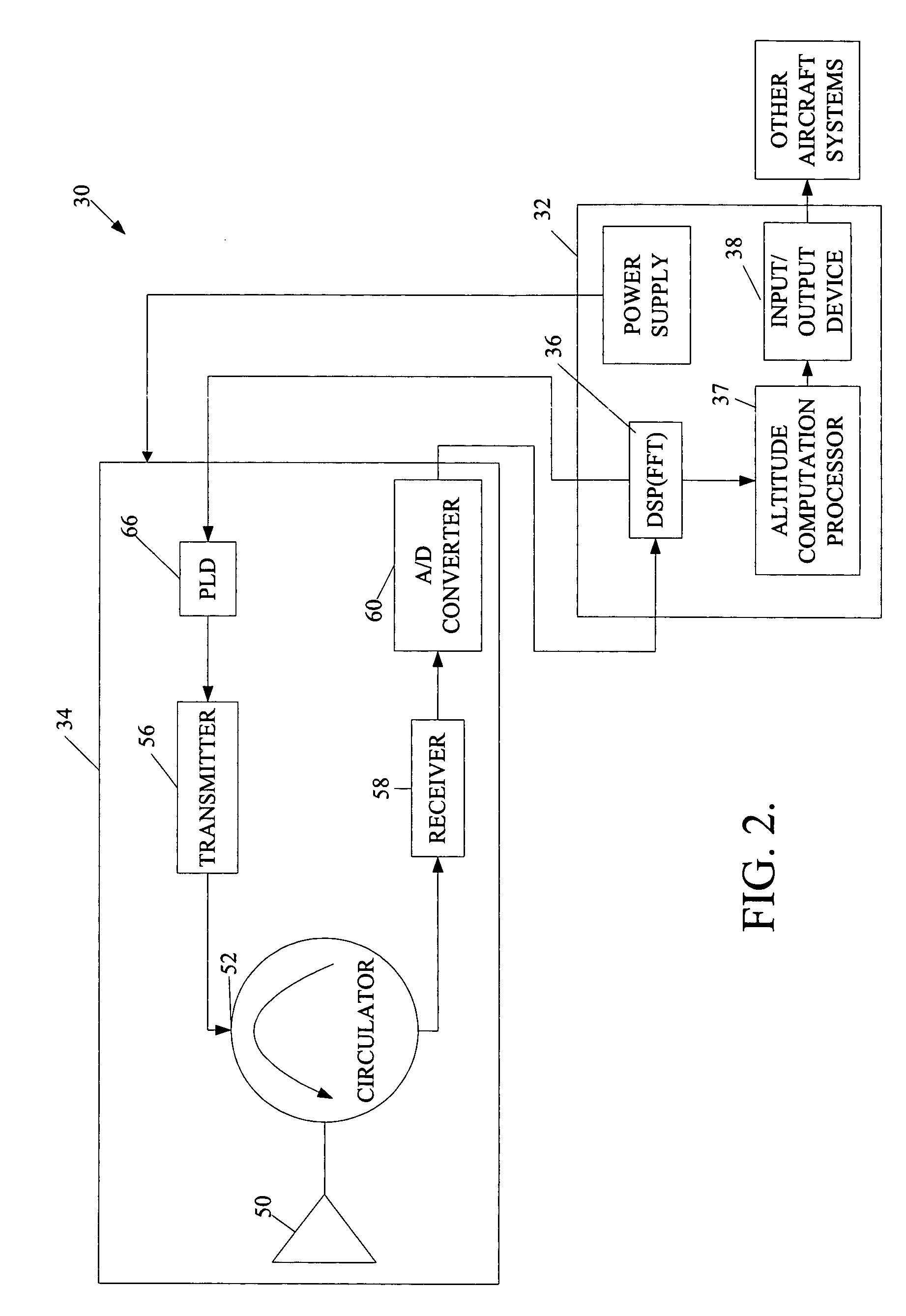Radar altimeter
- Summary
- Abstract
- Description
- Claims
- Application Information
AI Technical Summary
Benefits of technology
Problems solved by technology
Method used
Image
Examples
Embodiment Construction
[0027]FIG. 2 illustrates a system 30 that provides more accurate radar altimeter measurements and tail strike warnings. The system 30 includes a radar altimeter 34 and an signal processing system 32. The signal processing system 32 includes a processor 36, an Altitude Computation Processor (ACP) 37 and an input / output device 38. In one embodiment, the processor 36 is a digital signal processor (DSP) with Fast Fourier Transform (FFT) or a Field Programmable Gate Array (FPGA). The radar altimeter 34 is in signal communication with the signal processing system 32 and other aircraft systems, such as a ground-proximity warning system. The radar altimeter 34 sends serial data produced by an Analog to Digital (A / D) Converter 60 to the processor 36, which in turn transfers altitude bin data to the ACP 37. The ACP 37 analyzes distance to ground values and may generate a tail strike warning based on the analysis. If the ACP 37 produces a tail strike warning, the input / output device 38 present...
PUM
 Login to View More
Login to View More Abstract
Description
Claims
Application Information
 Login to View More
Login to View More - R&D
- Intellectual Property
- Life Sciences
- Materials
- Tech Scout
- Unparalleled Data Quality
- Higher Quality Content
- 60% Fewer Hallucinations
Browse by: Latest US Patents, China's latest patents, Technical Efficacy Thesaurus, Application Domain, Technology Topic, Popular Technical Reports.
© 2025 PatSnap. All rights reserved.Legal|Privacy policy|Modern Slavery Act Transparency Statement|Sitemap|About US| Contact US: help@patsnap.com



